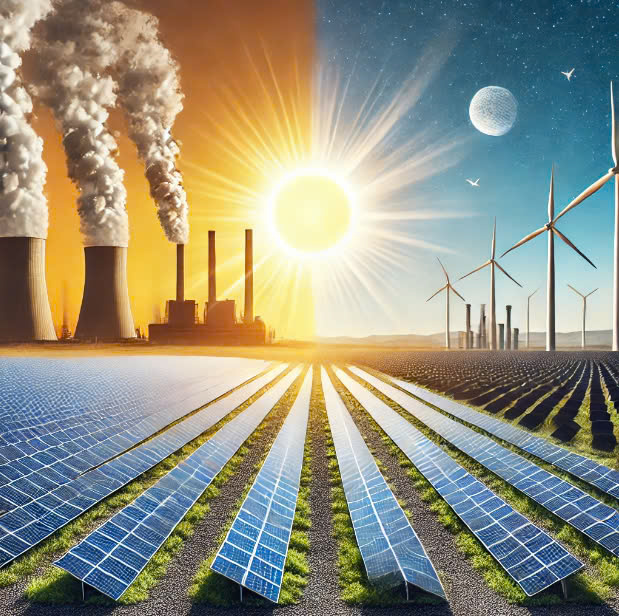In recent years, solar energy has emerged as a potential solution in the context of increasing demand for clean energy. However, compared to traditional energy sources such as thermal power and hydropower, solar energy still faces many significant challenges. The fierce competition between these energy sources arises not only from economic factors but also from infrastructure, market, and supportive policies.

1. Cost and Economic Efficiency
One of the biggest barriers solar energy faces is cost. Although the production cost of solar panels and installation systems has significantly decreased over the past decade, solar energy still has a higher initial investment cost compared to traditional energy sources.
Coal and gas-fired thermal power still dominate due to lower production costs and well-established supply chains. The stability and reliability of thermal power plants also make them a preferred choice for many countries, especially in the context of growing energy demand.
Hydropower is also a formidable competitor. In Vietnam, large hydropower projects have been contributing significantly to the national power grid with low operating costs after construction.
Compared to these sources, solar energy has yet to generate electricity at a low cost on a large scale, especially when considering the need for energy storage during times without sunlight. Although solar energy costs have gradually decreased, price stability remains an issue that needs to be addressed.
2. Continuous Supply Capability
The stability of the supply source is a critical factor in this competition. Thermal power and hydropower plants can produce electricity continuously, regardless of weather conditions or time of day. In contrast, solar energy is entirely dependent on sunlight, which means it only operates during the day and decreases in efficiency on rainy or cloudy days.
This leads to a high demand for energy storage systems, such as batteries, to maintain electricity supply at night or during unfavorable weather conditions. Currently, this storage technology is not yet fully developed and remains expensive, reducing the competitiveness of solar energy compared to thermal and hydropower, which have more stable electricity supply capabilities.
3. Infrastructure and Scale
Energy transmission and distribution infrastructure is also a crucial factor in this competition. Thermal power and hydropower have been invested in and developed for decades, with an extensive and stable electricity transmission network. These plants are often built near areas with high electricity demand, minimizing transmission losses.
Conversely, solar energy projects, especially in remote areas with abundant sunshine like central Vietnam, face difficulties in connecting to the national grid due to a lack of transmission infrastructure. Building new transmission systems takes time and requires large investments, adding another burden to solar energy projects.
4. Policy Support
Government policies and subsidies are critical factors influencing the competitiveness between solar energy and traditional energy sources. In many countries, including Vietnam, coal-fired thermal power still receives strong financial support, and some new coal-fired thermal power projects are even being approved.
Although the government has made strides in promoting renewable energy, instability in policies regarding feed-in tariffs (FIT) and payment mechanisms for solar energy projects has made many investors hesitant. This reduces the competitiveness of solar energy compared to thermal and hydropower projects, which have long had a stable system of supportive policies.
5. Market Habits and Stability
Thermal and hydropower plants have existed for decades, providing a stable energy source and becoming a familiar part of the national energy system. Meanwhile, solar energy is still considered a new solution and has yet to achieve the same level of stability. Convincing businesses and consumers to fully switch to using solar energy remains a significant challenge, requiring a shift in consumer habits and social awareness.
Although solar energy is emerging as an advanced and sustainable solution for the future, competition with traditional energy sources remains a major obstacle. High costs, unstable supply, lack of transmission infrastructure, and strong government support for traditional energy are factors that reduce the competitiveness of solar energy. To overcome these challenges, improvements in storage technology, infrastructure investments, and clearer support policies are needed to promote the development of renewable energy in Vietnam.
Hotline
Hotline